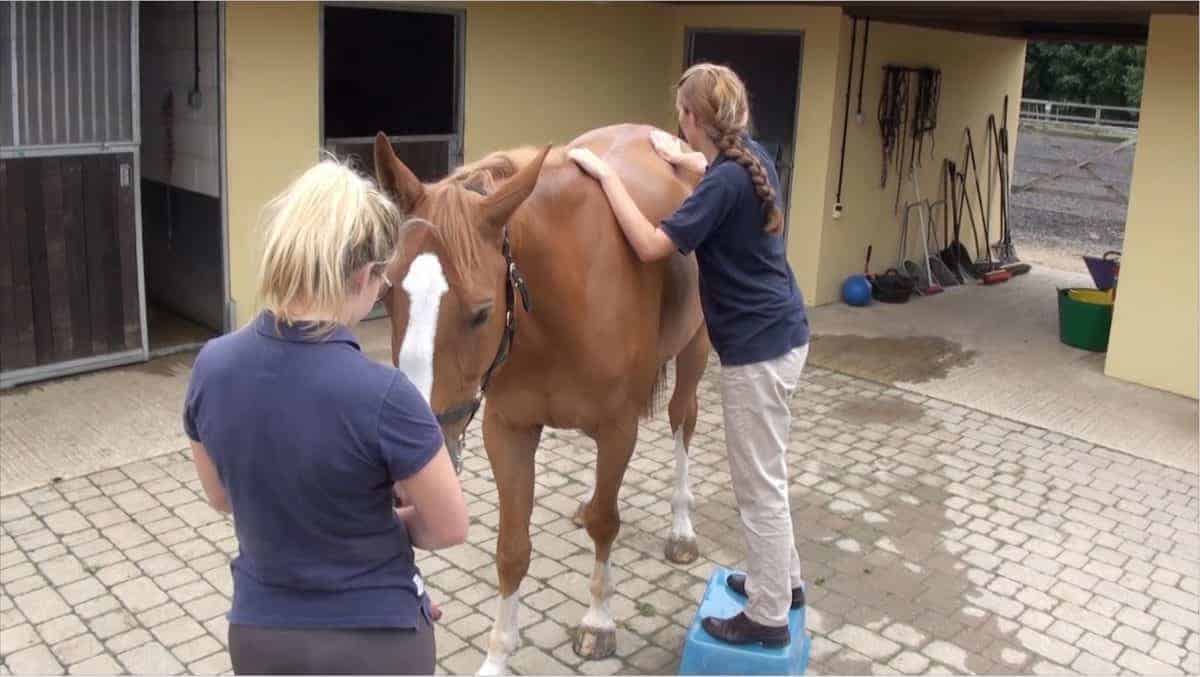H&C’s equine physio explains why your horse has a sore back

Want to know why your horse has a sore back? H&C spoke to equine physio Hermione Gayton to find out.
“Most of the horses I see are suffering with back pain. In order to understand this problem, and what can be done about it, we need to get to grips with how the horse’s back is structured and how it moves. It’s a massive topic, but I will try to keep things simple. So make yourself a cup of tea, get comfy and start reading. Your horse will thank you for it.
The science bit
Let’s start with some anatomy and biomechanics. The spine is made up of vertebrae, running from the base of the skull to the tip of the tail. These vertebrae are categorised as follows:
- Cervical (neck)
- Thoracic (withers and under the saddle)
- Lumbar (behind the saddle)
- Sacral (last fused vertebrae, running through the pelvis)
- Caudal (tail)
Projecting upwards from each vertebra is a dorsal spinous process (DSP). Ideally, there should be a slight gap between each of the DPSs. When the gap between them narrows, they can come in contact with each other. Over time, remodelling of the bones may occur, causing pain. This is what is commonly referred to as ‘kissing spines’.
The shape, function and movement of each vertebrae change according to where it is on the horse.
The effect of the rider
In order to support the weight of the rider, the horse needs to be able to work with his back held in slight flexion – or at least in a neutral position.
The most commonly accepted theory of equine back mechanics is the ‘bow and string theory’. This suggests that flexion of the spine is caused by:
- Protraction of the hind limbs – where the hind limbs are brought underneath the horse
- Contraction of the abdominal muscles
- Lowering of the head
Extension (where the back hollows) is caused by:
- Retraction of the hind limbs – where the hind limbs move out behind the horse
- Raising of the horse’s head
Abdominal and spinal muscles
The abdominal muscles and spinal muscles have an important role to play in keeping the horse’s spine in a good neutral position. Working the horse with a hollow back will not only potentially effect the vertebrae in its spine, but will almost certainly effect its muscles and soft tissues.
If the horse tends to work with its back in a degree of extension, the muscles on either side of the spine are working in a constantly shortened state. With time this leads to chronic tightening and pain within the muscles. The muscles then can’t work effectively to support the back in a neutral position. It’s a viscous cycle, but one that physiotherapy and correct riding can help with.
Conformation and posture
Some horses are more at risk of back problems, due to their confirmation. For example they may have a hollow or long back, while others have more vertebrae in their lumbar region.
Conformation should not be confused with posture – posture is something that we can improve. A horse’s back may appear hollow if their abdominal muscles aren’t working correctly to support them. However, with correct training we can improve the tone and activation of their muscles, and therefore improve their posture.
Saddle fit and hind-limb lameness
Evidence has shown that a poorly fitting saddle causes asymmetrical muscle development, poor gait quality, and back pain for both horse and rider.
Clients often remark their saddle doesn’t fit because it’s slipping to one side. However, this can be due to hind-limb lameness or rider crookedness, rather than the saddle.
We know from research that if a horse is suffering from lameness, the movement in its back changes. Hind limb lameness often causes back pain because the horse has to compensate. Although relieving their back pain will be helpful, in these cases things will only improve once the hind limb lameness has been addressed.”






